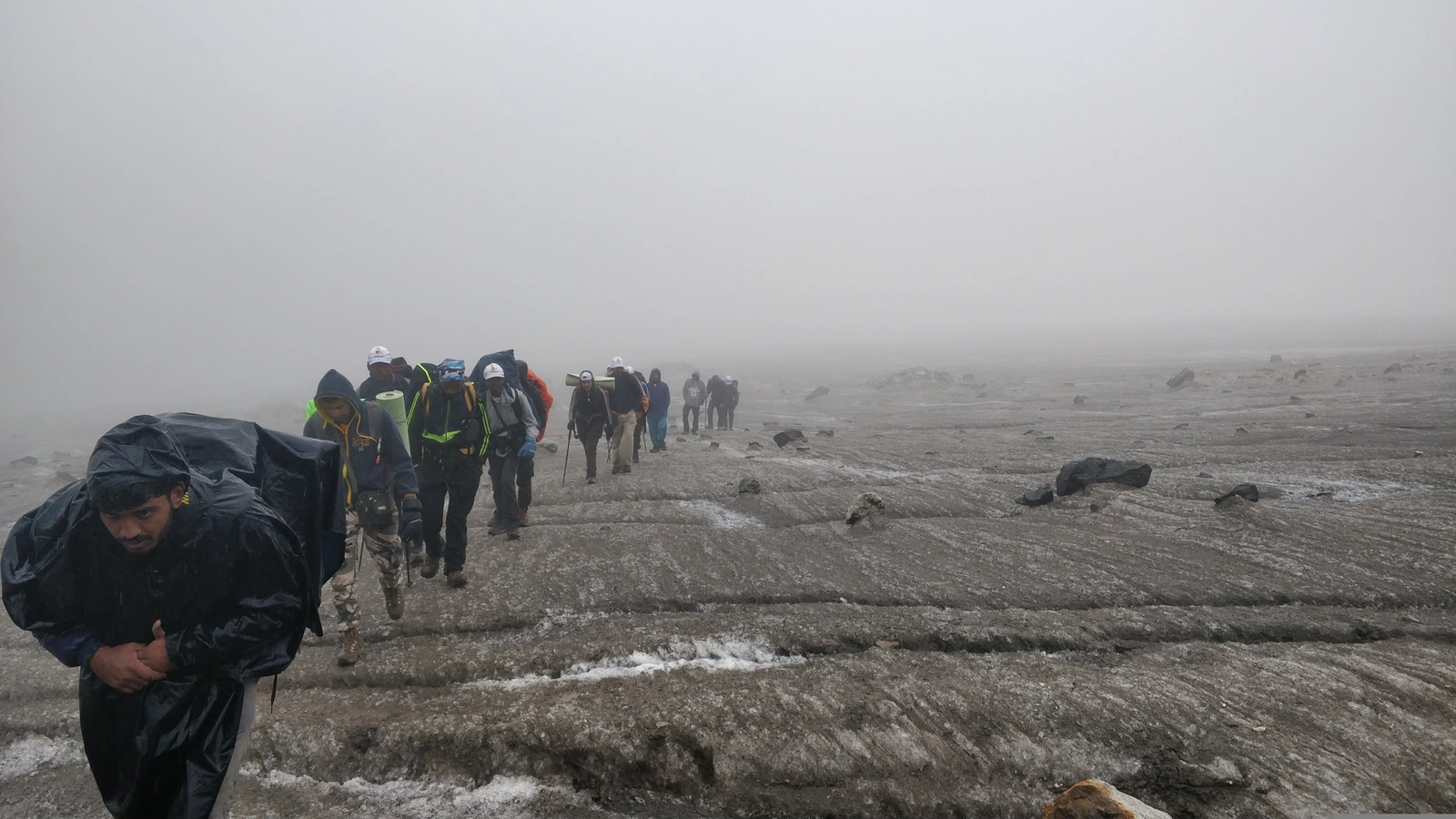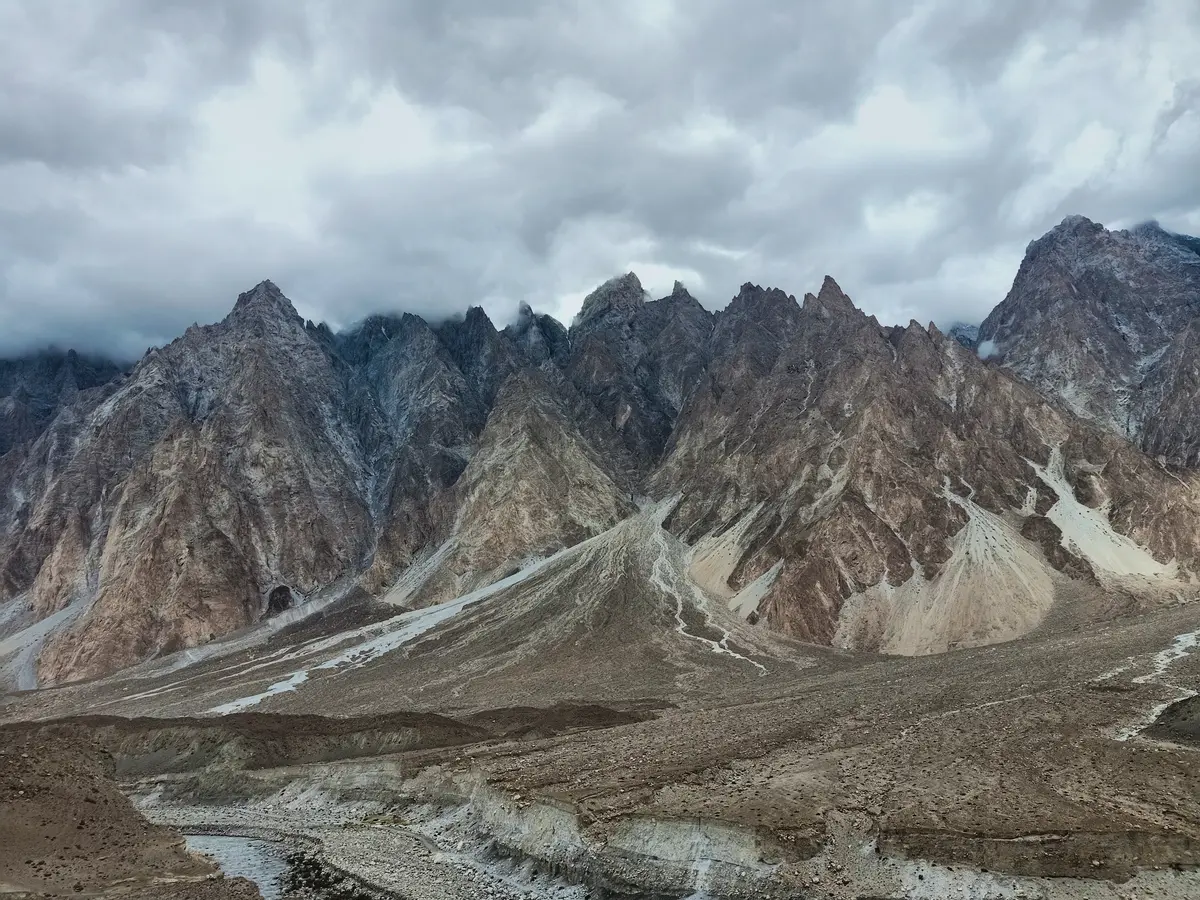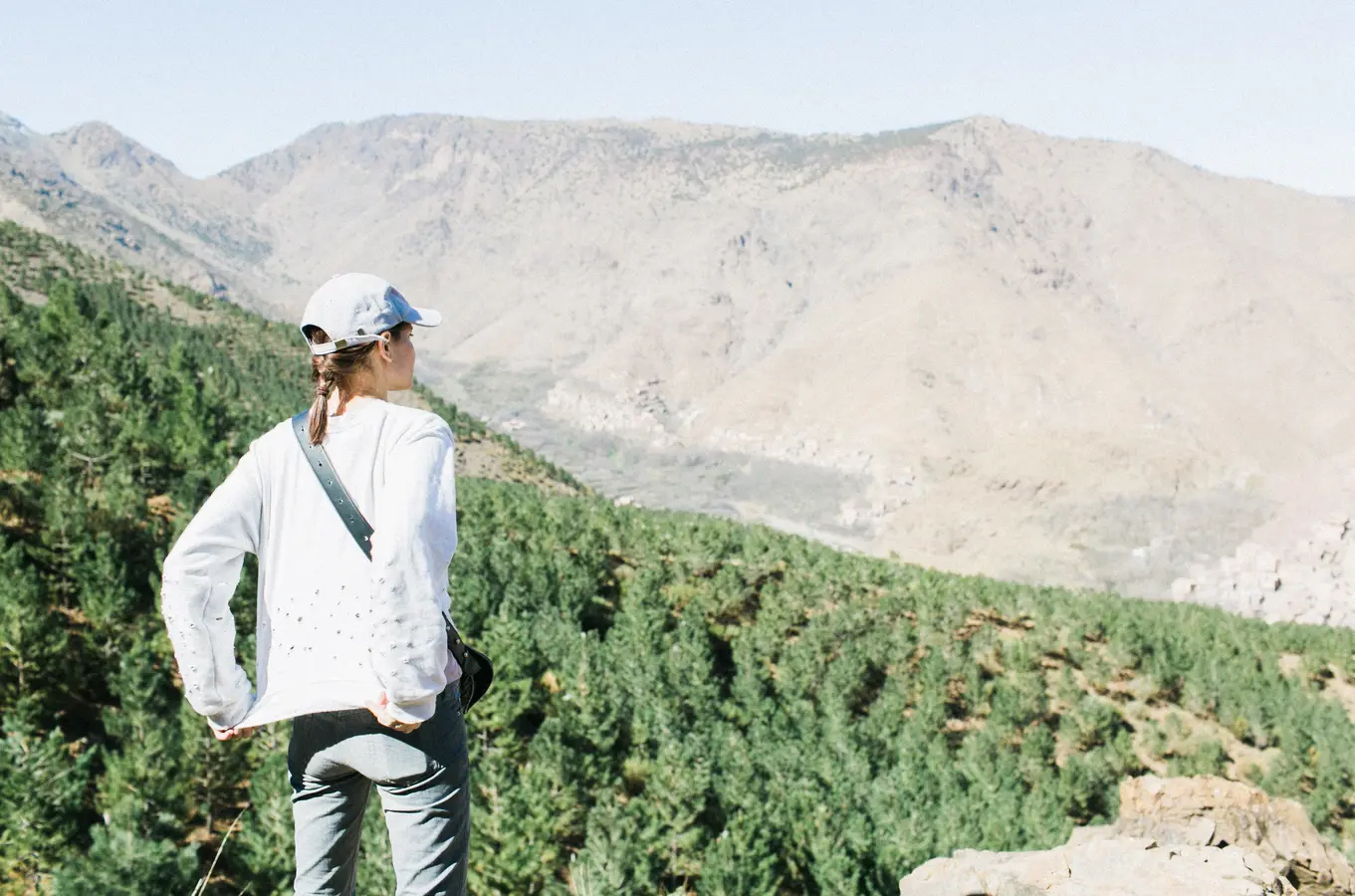
Pakistan is a hidden gem when it comes to trekking and adventure tourism. With its awe-inspiring landscapes, diverse terrains, and rich cultural heritage, the country offers many unparalleled trekking experiences.
Additionally, it is a paradise for trekkers and hikers who want to experience its landscapes’ natural beauty and diversity. Many amazing treks and hikes in Pakistan suit different difficulty levels, duration, and budgets. Here are why Pakistan is a trekking heaven for adventure seekers and nature enthusiasts alike. Book your slot today with our super-selling trekking tour packages from Pakistan.
Table of Contents
Pakistan is home to some of the world’s highest and most spectacular mountain ranges, including the mighty Himalayas, the rugged Karakoram, and the serene Hindu Kush. These stunning peaks, such as K2, Nanga Parbat, and Rakaposhi, provide a breathtaking backdrop for trekkers, making every journey an unforgettable experience.
Pakistan’s diverse landscapes offer trekkers a variety of terrains and ecosystems to explore. From the lush green valleys and alpine meadows of the north to the stark beauty of the Balochistan plateau and the deserts of Sindh, there is no shortage of awe-inspiring scenery to discover.
Pakistan boasts many unique trekking routes catering to different skill levels and interests. Popular treks include the Concordia-K2 Base Camp Trek, the Fairy Meadows and Nanga Parbat Base Camp Trek, and the Biafo-Hisper Glacier Traverse. Each trail offers a different experience, allowing trekkers to immerse themselves in the country’s natural beauty and culture.
Trekking in Pakistan allows one to experience the country’s rich cultural heritage. Along the trails, trekkers will encounter diverse ethnic groups, such as the Balti, Kalash, and Wakhi people, each with their unique customs, languages, and traditions. This cultural immersion adds a fascinating dimension to the trekking experience.
Trekking Vs. Hiking? What's the difference? Find out here
Pakistanis are known for their warm hospitality and friendliness, making trekkers feel welcome and at home. As you traverse the trails, you will encounter locals eager to share their knowledge, stories, and even their homes, providing a truly authentic experience.
Pakistan’s trails are relatively untouched and unspoiled compared to more popular trekking destinations. Trekkers can enjoy the pristine wilderness and tranquility of the mountains without the crowds, allowing for a more intimate and immersive experience.
Pakistan offers a cost-effective trekking experience compared to other popular destinations. Accommodation, food, and transportation are relatively affordable, making it an attractive option for budget-conscious adventurers.
Fairy Meadows and Nanga Parbat Base Camp: The trek takes you to the enchanting Fairy Meadows, a grassy meadow with stunning views of Nanga Parbat, the ninth-highest mountain in the world. You can also hike to the base camp of Nanga Parbat and get closer to the majestic peak.
Barah Broq Trek: The trek is a hidden gem in the Skardu Valley that offers a serene and scenic experience of walking through lush green pastures, pine forests, and alpine lakes. You can also see the mighty K2, Broad Peak, and Gasherbrum IV peaks from Barah Broq.
Patundas Trek: The trek is a challenging but rewarding adventure that takes you to Patundas Ridge, a high-altitude meadow that overlooks the Batura and Passu glaciers. You can enjoy panoramic views of some of the highest peaks in the Karakoram range, such as Shispare, Ultar, Rakaposhi, and Diran.
Deosai National Park Trek: This trek is a unique opportunity to explore the Deosai plateau, one of the highest and largest plateaus in the world. You can witness the rich biodiversity of Deosai, which is home to rare wildlife such as brown bears, golden marmots, and snow leopards. You can also see the beautiful Sheosar Lake, which reflects the surrounding mountains like a mirror.
Passu Glacier Trek: This trek is a great day hike in the Hunza Valley, where you can see the impressive Passu glacier and the Passu cones, a group of jagged peaks that rise above the glacier. You can also walk on the glacier with a guide or join a multi-day trek to other regional places.
Concordia trekking is a popular adventure activity in Pakistan. It involves trekking on the Baltoro Glacier and the Godwin-Austen Glacier to reach Concordia, the confluence of these two glaciers, and the base camp of K2, the second-highest mountain in the world. Concordia is also known as the Throne Room of the Mountain Gods because it offers spectacular views of four 8,000-meter peaks: K2, Broad Peak, Gasherbrum I, and Gasherbrum II. Concordia trekking is a challenging but rewarding experience that attracts many foreign trekkers yearly.

K2 Concordia Trek
The duration of the Concordia trek varies depending on the route and the pace of the trekkers. According to some sources, the standard Concordia trek takes 20 days, including travel time from Islamabad to Skardu and back. However, some trekkers may opt for a shorter version of 13 days that covers only the trekking part. Alternatively, some trekkers may extend their trip to include other attractions, such as Gondogoro La, a high mountain pass that offers stunning views of the Karakoram peaks(walkopedia.net). This can add another 3 to 5 days to the trek. Therefore, the Concordia trek can range from 13 to 25 days.
Concordia trekking is a popular adventure that takes you to the base camp of K2, the second-highest mountain in the world, and Concordia, the heart of the Karakoram mountain range. According to the web sources, the best time to do the Concordia trekking is in the summer, from May to September. The weather is more stable, and the views are clearer during this season. However, you should also be prepared for cold nights and possible snowfall at higher altitudes.
Concordia trekking is a popular adventure that takes you to the base camp of K2, the second-highest mountain in the world, and Concordia, the heart of the Karakoram mountain range. According to the web sources, the best time to do the Concordia trekking is in the summer, from May to September. The weather is more stable, and the views are clearer during this season. However, you should also be prepared for cold nights and possible snowfall at higher altitudes.
Gondogoro trekking is a challenging and rewarding adventure that takes you to Pakistan’s heart of the Karakoram mountains. You can see four 8000m peaks (K2, Broad Peak, Gasherbrum I, and Gasherbrum II) and countless other peaks from the top of the Gondogoro La (5940m), a high glaciated pass that connects the Baltoro and Hushe valleys.
The best time for Gondogoro trekking is late June to August, when the pass is easier to cross, and the weather is more stable. However, you need good fitness, acclimatization, mountaineering skills, and equipment to cross the pass safely, as it involves steep snow slopes with avalanches and rock-fall danger. You also need a permit and a licensed guide to enter the restricted zone.
The trek can take up to 15 days round trip from Thungol to Hushe or shorter if you start from Hushe and return via the same route. You can also extend your trek by visiting Masherbrum or K7 base camps before going up the Gondogoro Valley. The trek covers a distance of about 115 km and involves camping at different altitudes along the way.
Passu glacier trekking is a popular activity for adventure seekers who want to explore the stunning scenery of the Hunza Valley in Pakistan. The Passu glacier is a part of the Karakoram mountain range and offers spectacular views of the Passu cones, a group of jagged peaks that rise above the glacier.
There are different ways to enjoy Passu glacier trekking, depending on your time, budget, and skill level. You can do a day hike to the glacier from the nearby Passu village, which takes about 5 to 6 hours round trip. You can also hire a guide or join a tour to walk on the glacier, but you need the proper equipment and experience to do so safely. Alternatively, you can do an overnight trek to a higher area or combine Passu Glacier with a multi-day trek to other regional places, such as Borith Lake or Batura Valley.

Passu Cones Trek
The best time for Passu glacier trekking is from May to September when the weather is more stable and the trails are more accessible. However, you should always be prepared for low temperatures, sudden weather changes, and possible roadblocks and landslides. You should also respect the local culture and customs of the people living in the area, who are mostly Ismaili Muslims and speak the Wakhi language.
Harmosh Valley trekking in Pakistan is a thrilling and scenic adventure that takes you to the beautiful Harmosh Valley and Kutwal Lake in the Gilgit-Baltistan region. The Harmosh valley is part of the Rakaposhi-Haramosh massif, a sub-range of the Karakoram range, where you can see some of the highest peaks in Pakistan, such as Haramosh peak (7409m), Laila peak (6096m) and Malubiting peak (7458m).
The trek starts from a small village called Sassi, located on the Gilgit-Skardu road, where you can hire a jeep or a guide to take you to the trailhead at Dasu. From there, you have to hike for about two days to reach Kutwal Lake, a stunning high-altitude lake that reflects the surrounding mountains like a mirror. The trek crosses streams, forests, meadows, and glaciers and offers impressive views of the valley and the peaks.
When planning your trip to Harmosh Valley, it is important to remember that the weather can be unpredictable. Pack clothing and gear suitable for a variety of temperatures. Additionally, bring adequate supplies in case you become stuck due to roadblocks or landslides.
Be sure to also familiarize yourself with the local customs and language before visiting Harmosh Valley so that you can respectfully interact with residents. Most of the people living in this area are Shia Muslims and speak Shina, so make sure to brush up on any relevant cultural knowledge before your visit.
Fairy meadow trekking is a beautiful and popular activity that allows you to see the majestic Nanga Parbat, the ninth-highest mountain in the world, from a close distance. Fairy Meadows is a grassy meadow with stunning views of Nanga Parbat and the Raikot glacier in the Diamer district of Gilgit-Baltistan.
The trek starts from Raikot bridge on the Karakoram Highway, where you can hire a jeep to take you to Tato village, a 15 km ride on a rough and steep road. From Tato village, you must hike on a well-established dirt track for 3 to 4 hours to reach Fairy meadows, gaining 700 m elevation. The trek involves crossing streams, forests, and meadows and offers impressive views of the valley and the peaks.
The best time for Fairy Meadows trekking is from April to October. The trek to Fairy Meadows is one of the most rewarding treks in Pakistan, and it can provide an adventure-filled experience. The trail passes through lush green forests, snow-capped mountains, and wide open meadows with breathtaking views. There are plenty of opportunities for exploration during the trek, and you can even spot exotic wildlife on your journey once you arrive at Fairy Meadows.
However, you should always be prepared for low temperatures, sudden weather changes, and possible roadblocks and landslides. You should also respect the local culture and customs of the people living in the area, who are primarily Sunni Muslims and speak the Shina language.
Rakaposhi trekking is a great way to experience the beauty and majesty of one of the highest peaks in Pakistan and the world. Rakaposhi is a 7,788 m (25,551 ft) high mountain in the Karakoram range in the Nagar Valley of Gilgit-Baltistan. The trek takes you through stunning valleys, lush green meadows, and beautiful glaciers, culminating at the base camp of Rakaposhi.
The trek starts from the small town of Minapin, located on the Gilgit-Skardu road, where you can hire a jeep or a guide to take you to the trailhead at Dasu. From there, you have to hike for about two days to reach the Rakaposhi base camp, also known as Taghaphari, at an altitude of 4,150 m (13,615 ft). The trek crosses streams, forests, meadows, and glaciers and offers fantastic views of the Rakaposhi and Diran peaks.
The best time for Rakaposhi trekking is from June to October, when the weather is more favorable, and the trails are more accessible. Be sure to bring enough food and water for your trip and warm clothes just in case. Additionally, being aware of local laws and regulations while traveling is essential to stay out of trouble. You should also respect the local culture and customs of the people living in the area, who are mostly Shia Muslims and speak the Shina language.
Tirich Mir trekking is an adventurous and scenic activity that takes you to the base camp of Tirich Mir, the highest peak in the Hindu Kush range and the 33rd highest peak in the world. Tirich Mir is a 7,788 m (25,551 ft) high mountain in the Chitral district of Khyber Pakhtunkhwa province. The trek takes you through stunning valleys, lush green meadows, and beautiful glaciers, culminating at the base camp of Tirich Mir, also known as Babu Camp, named after a veteran guide Babu Mohammad.
The trek starts from the small town of Shagrom, located in the Tirich Valley, a western branch of the Turikho Valley. From there, you can hire a jeep or a guide to take you to the trailhead at Dasu. From Dasu, you have to hike for about two days to reach the Tirich Mir base camp at an altitude of 4,724 m (15,498ft). The trek involves crossing streams, forests, meadows, and glaciers and offers fantastic views of the Tirich Mir and other impressive 7000 m peaks along the way, such as Noshaq (7,492 m), Istor-o-Nal (7,403 m), and others.
The best time for Tirich Mir trekking is from June to October when the weather is more favorable and the trails are more accessible. However, you should always be equipped for low temperatures, sudden weather changes, and likely roadblocks and landslides. You should also respect the local culture and customs of the people living in the area, who are primarily Sunni Muslims and speak the Khowar language.
Snow lake trekking is an excellent and challenging adventure that takes you to a high-altitude glacial basin in the Karakoram mountains in Gilgit-Baltistan. Snow Lake, also known as Lukpe Lawo, is not a lake, despite its name, but a vast area of ice and snow that covers about 77 sq km at an altitude of 4,800 m (15,748 ft). The basin is located at the head of the Biafo and Hispar glaciers, which form a 100 km (62 mi) long continuous glacier system that is one of the longest in the world.
The trek starts from Askole, a small village in the Shigar Valley, where you can hire a jeep or a guide to take you to the trailhead at Korofong. From there, you must hike for about ten days to reach Snow Lake, crossing the Biafo glacier and the Hispar pass (5,151 m), the highest point on the trek. The trek involves crossing streams, moraines, crevasses, and snowfields. It offers stunning views of some of the highest peaks in the world, such as K2 (8,611 m), Broad Peak (8,047 m), Gasherbrum I (8,080 m), Gasherbrum II (8,035 m), Masherbrum (7,821 m), Chogolisa (7,665 m) and others.
The best time for Snow Lake trekking is from June to September when the weather is more favorable and the trails are more accessible. However, you should always be trained for low temperatures, sudden weather changes, and possible roadblocks and landslides. You should also respect the local culture and customs of the people living in the area, who are mostly Shia Muslims and speak the Balti language.

Pakistan is a trekking paradise for nature enthusiast
Baskochi Attabad Lake trek is a short and scenic hike that takes you to a high viewpoint above the Attabad Lake in Hunza Valley, Gilgit-Baltistan. Attabad Lake is a turquoise-colored artificial lake formed in 2010 after a massive landslide blocked the Hunza River. The lake is a popular tourist attraction, offering various activities such as boating, fishing, and jet skiing.
The trek starts from the Attabad tunnels, part of the Karakoram Highway that connects Pakistan and China. From there, you have to hike for about 3 to 4 hours on a steep and rocky trail to reach the Balochi Top, also known as Baskochi Top, at an altitude of about 3,900 m (12,795 ft). The trek crosses streams, meadows, and pine forests and offers stunning views of Attabad Lake and the surrounding mountains.
The best time for the Baskochi Trek Attabad Lake trek is from April to October when the weather is more clear and the trails are more accessible. However, you should always be equipped for low temperatures, sudden weather changes, and possible roadblocks and landslides. You should also respect the local culture and customs of the people living in the area, mostly Ismaili Muslims who speak Burushaski.
Pakistan is undoubtedly a trekking paradise, offering an unbeatable combination of majestic mountains, diverse landscapes, unique trekking routes, rich cultural experiences, warm hospitality, and affordability. For those seeking the thrill of adventure and the allure of the unexplored, Pakistan is the ultimate trekking heaven waiting to be discovered.
Since 2017, Saba Ghani has been serving as the talented and dedicated chief content writer for Pakistan Tour and Travel & EMHI Solutions. With her exceptional writing skills and in-depth knowledge of the travel industry, she has been instrumental in crafting engaging and informative content that captivates the audience. You can catch her at saba@pakistantourntravel.com or Twitter
12Years of relentless tourism Services in Pakistan